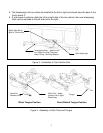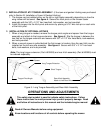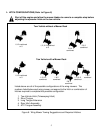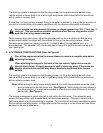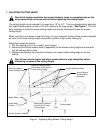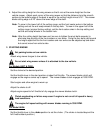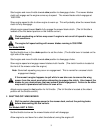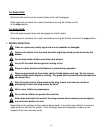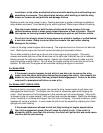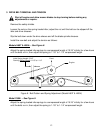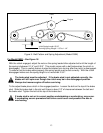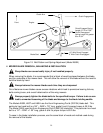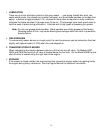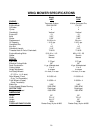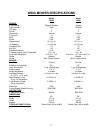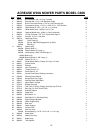
Look down, to the sides, and behind before and while backing to avoid backing over
something or someone. Care should also be taken while backing so that the wing
mower or mowers do not jackknife and damage hitches.
Backing up with one wing mower is easy. Backing becomes a greater challenge as additional
wing mowers are towed. Avoid backing up by planning ahead. Make loops instead of backing.
Stop the mower blades on both the tow vehicle and all wing mowers if the tow
vehicle becomes stuck or stops going forward because of loss of traction. Shut off
the engines on the wing mowers before attempting to push or pull the tow vehicle.
Do not turn too sharply when the wing mowers are pulled in tandem or pulled behind
a zero turn mower. Sharp turns can force the mowers into each other causing
damage to the hitches.
Listen to the wing mower engines while mowing. The engines should run free and not work too
hard. Working the engine too hard will cause overheating and premature failure.
Do not allow material to build up on the air inlet to the engine cooling system. If the wing
mowers are towed with one on the left and one on the right side, there will be a lot of material
blowing around the right wing mower engine. Special care should be taken to make sure the
engine is getting enough inlet air. Do not allow the engine cooling fins under the shroud to be
blocked. Air flow over the engine will be restricted causing the engine to overheat.
For Model E60B:
If the mower’s engine happens to quit while in use take care to remove the wing
mower from the uncut area before attempting to engage the clutch. Also inspect the
blades for any obstructions that may prevent blade engagement. Failure to do either
may result in premature belt failure or even a fire.
For Models H60T, H60H & C60K:
Mowing to fast in very heavy, long grass can cause the wing mower engine to pull down and
disengage the blade clutch. The engine can then start to accelerate again while slipping the
clutch. Small amounts of clutch slippage for a few seconds will not cause damage. If the clutch
is allowed to slip for longer periods, it will overheat and could be damaged. Watch the discharge
chute; if material is not being discharged, then the clutch is slipping. In normal conditions, clutch
slippage will not be a problem. In most cases the clutch can be repaired by replacing the clutch
springs and clutch bearing.
If the mower blades are allowed to stall out (stop turning) at engine speeds above
the clutch engagement speed, this will cause the clutch to slip. If the clutch is
allowed to slip for more than five minutes, the clutch will get red hot and could cause
the drive belt to start burning.
11



